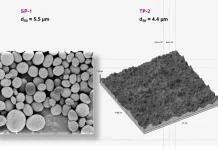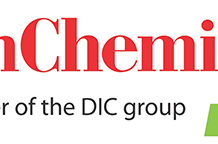By Jacqueline Liger, marketing manager, Cefla North America
When compared with digital printing, rotary printing has had a very long run. The idea of printing by using rotating cylinders was pioneered in the mid-1800s. By the 1930s, both Broadway and the Silver Screen were celebrating the exotic-sounding innovation known as “rotogravure,” or “roto” for short, in the lyrics of songs such as Irving Berlin’s “Easter Parade” and “Hooray for Hollywood.”
For decades in the 20th century, rotogravure printing became more sophisticated and worked perfectly for mass-produced newspaper supplements and other products – until the introduction of the photocopier around 1960 and the laser and dot matrix printers around 1970 made revolving cylinders look far less revolutionary. The inkjet printer actually was developed around 1976, but it wasn’t until the 1990s that the industry really started to advance toward the digital printing technology of today. Despite the Y2K scare, the digital world continued barreling toward the 21st century and a seismic paradigm shift in market demand fueled by technological innovation.
The advent of consumer personalization
As clocks with hands gave way to digital representations of time, two factors converged to create a perfect storm for printing techniques. First, there was no way to give 150-year-old rotary printing technology faster makeready. Second, the kind of “mass” communications both gravure and offset printing are good at churning out began to succumb to widespread desire for one-on-one and interactive communications, as well as product personalization available through faster and more flexible technology. Before long, consumers could get excited about the idea of buying personalized bottles of Coca-Cola, and furniture stores began to look for ways to let customers personalize every aspect of their couches. If personalization is defined as using technology to accommodate differences in individual consumer preferences, mass customization can be seen as a process for implementing personalization. With enough variety and customization, nearly everyone can find exactly what they want.
Today, the writing also is on the wall to extend the personalization trend to enhance the flooring industry.
“You’re going to see customers wanting to buy flooring customized to coordinate with the color of their walls, curtains and other décor elements in homes,” says Roy Pagan, business development manager at Cefla North America’s Finishing Division. “For a number of years, consumers have been walking into their favorite home improvement store with a swatch of fabric or other sample and asking a store to mix paint to match it. A spectrometer scans the sample, specifies the color values and, in minutes, you have just the right paint for your project.”
Pagan says the market is moving toward an era of getting an exact hue or tone in flooring as well. The advent of composite flooring products also opens all kinds of possibilities for digital printing with UV inks, achieving results in short print runs that analog printing cannot match.
Before the current age of personalization, coupled with challenges from overseas competition, Pagan says floor manufacturers didn’t need the speed and flexibility of digital printing to meet demand. When only four or five SKUs (stock keeping units) are offered, manufacturers can run their most popular SKU continuously for an entire week, then clean the cylinders, do the press change-outs and run the second most popular SKU for two or three days, and so on.
“But, in today’s market, companies have gone from five SKUs to maybe 100-plus SKUs,” Pagan says, “and it’s harder for them to do change-outs between runs without buying more analog equipment. Digital solves that problem immediately by directly printing on the material without the need for cylinders and with minimal makeready steps.”
Digital enables mass customization
Mass customization clearly is today’s biggest driver of demand for digital printing in the flooring and other industries. With no parameters to dictate run length, digital printing enables cost-effective production, even for small quantities. This advantage opens up the opportunity for infinite design variations and the means to produce customized or one-off products. Image size and pattern lengths are not constrained by the limited repeat distance of analog plates or rolls, which means that pattern repeats can be eliminated.
Gaining faster time to market
Digital printing offers rapid job turnaround. Approved designs can go directly to print without time lost in preparing plates or engraving cylinders. Designs can be changed as quickly as touching a button. Lead times shrink because the digital printing operation can be moved from a dedicated site to a local conversion site. For example, the design can be digitally printed directly onto a finished wood laminate product, rather than having to order décor paper on a long lead-time from a specialist gravure printer.
Other advantages of digital printing cover the gamut from very short set-up times and minimum batches of one piece to elimination of outfit stocks such as printing rollers and screens and reduction of paper and ink stocks. Innovations such as Piezoelectric printing heads with drop-on-demand, printing heads with grayscale capability for a better quality and improved image definition, and printing heads with self-recovery capability that enhance operational life can help make digital printing the optimum choice for many customers. Combine those strengths with a wide range of materials to decorate, virtually unlimited decoration range, a plethora of colors and simple operator interfaces with touchscreen panels, and service providers always can be up and running to meet changing consumer demand.
Inventory reduction
Digital printing offers on-demand access, reducing the requirement to manufacture excess volume to reach a minimum batch size on every run. In addition to affecting the need to hold large volumes of stock to support minimum run lengths, exact order quantities also help minimize the cost of obsolete stock due to design change. Cost-effective management of specialty stock is another advantage that digital brings to the table.
Single-supplier synergy
When building a new production line, companies tend to work with a variety of suppliers for different modules in their lines. But, experts say looking for one with beginning-to-end capabilities avoids issues with incompatibility. “It’s never made sense to me to buy printing equipment from one company, finishing from another and sanding equipment from someone else entirely,” Pagan says.
Naturally better results
Traditional laminates designed to mimic natural materials often are printed with rotogravure using one to four engraved cylinders. The result often is a repetitive pattern without much dimension. In contrast, digital scanning technology makes it possible to take images of samples of a wood species and manipulate the files to capture characteristics such as light-play and shadow. Pagan and his colleagues also are working to advance direct digital printing technology even further with innovations that involve inert coating. For example, to create the look of rosewood, inert coating can be applied to impart texture prior to the printing process, rather than embossing afterward.
Room for growth
InfoTrends research estimated the worldwide installation base of UV digital printers at more than 6,000 in 2014, with most used for signage, display and packaging applications. As a group, they generated more than 200 million square meters in media, growing at a compounded rate of 20 percent with a projected total of over 500 million square meters in 2019. The majority of the industrial market, including both decorative (glass, flooring, wood, tile) and functional (electronics, solar, tooling, plastics), still uses conventional gravure and screen printing process, allowing much room for multi-industry growth. As consumer demand for customization continues and digital printing gets its due, expect use of analog vs. digital printing to achieve optimal balance.
Industrial enablers
“Several key enablers have combined to make digital printing ready for industrial markets,” says Ron Gilboa, director of production and industrial printing at InfoTrends digital printing. “First was the availability of inkjet print heads, which could be combined to form production systems with wide print arrays suitable for industrial manufacturing. Second, advancements in UV ink formulation yielded a broader color gamut, smaller particles and dimensional elasticity upwards of 200 percent elongation. Third, light-emitting diodes (LED) were rapidly adopted as the source for curing, reducing energy consumption and dramatically increasing the range of printed surfaces that could be used with UV inks.”
“UV inks are certainly not a new medium,” says Gilboa, “but applications for using them are now growing at an unprecedented rate.” In research conducted in 2015 by InfoTrends and NAPCO, 35 percent of respondents indicated they are using UV-curable ink flat-bed devices. That percentage was almost three times greater than the response to a similar question in a 2013 survey. When asked about their future purchasing intentions, 37 percent of respondents said they intend to buy UV-curable, flat-bed inkjet devices. Based on studies like that one, as well as intuitive observation by many in the industry, today’s marketplace is rapidly changing the balance of power between analog and digital printing. One way or the other, the best of what printing technology is capable of accomplishing is undoubtedly yet to be.
Cefla works with some of the largest names in building and furniture, as well as the aerospace and automotive industries. Cefla Finishing Solutions is part of an enterprise that includes Delle Vedove, Düspohl, Falcioni and Sorbini, all companies known for market-leading technology and innovation. Cefla serves its customers through a distribution network of subsidiaries, a large number of dealers and manufacturing sites in countries including the US and China. For more information, visit www.ceflaamerica.com.







